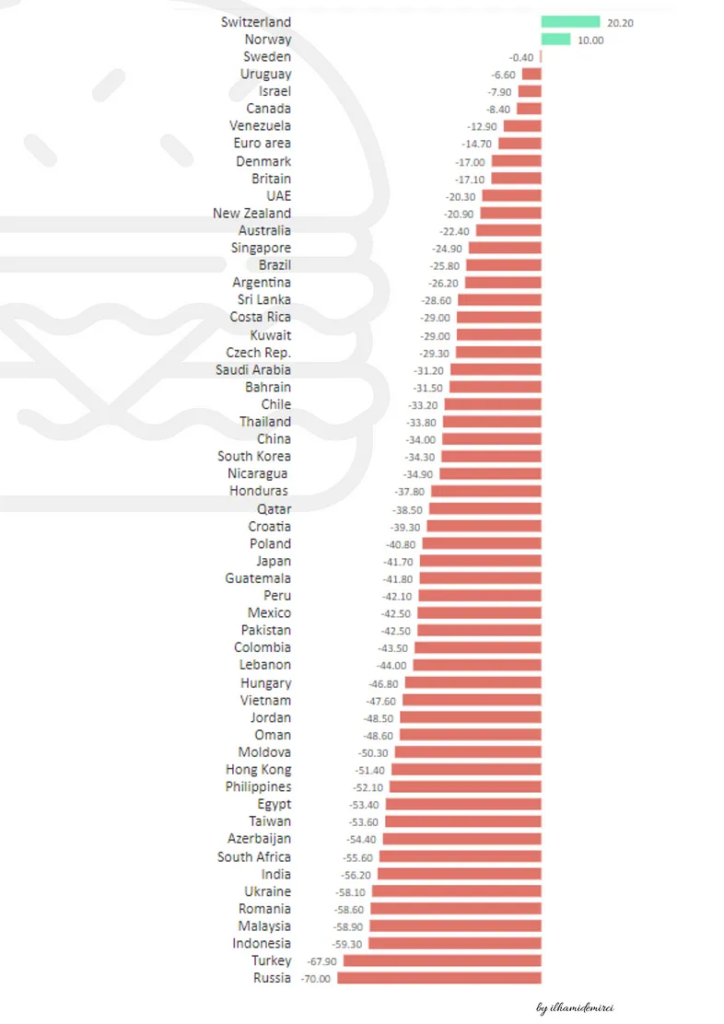
According to some, the discovery of money by the Lydians was the most important invention, and according to others, it was the beginning of the global disaster. It has been expressed as the most important commodity of the expression power and many wars have been fought for its sake. Many food raw materials such as wheat, cotton, sugar and animal meat also served as money in different barter methods used in place of money before. They have the meaning of ‘value’. Today, we will discuss the Big Mac, which has become a litmus of international purchasing power. You read right, Big Mac is hamburger. Let’s start!
McDonald’s, a fast-food company serving 70 million people a day, opened its first restaurant in California in 1940. One of the most famous products of the company, which continues to serve in more than 120 countries -and even has its own university (Hamburger University)- is the Big Mac. This simple product, consisting of 45.4 g 2 beef patties, 3 pieces of hamburger bun, special Big Mac sauce, lettuce, cheese, onion and pickles, was created and put into service in 1967 by Jim Delligatti. It was simple, but it became a universal flavor because it was made with the same formulation all over the world.
Popularity in the economic world increased with the “Big Mac Index” developed by reporter Pam Woodall in the British magazine The Economist in 1986. This index is an indicator that compares the purchasing power of different currencies with the prices of a Big Mac in different countries. Since then, it has been regularly researched and has taken its place in scientific research and educational books. It has been the right choice for comparison, as it is produced at the same standards all over the world and contains basic consumption materials such as bread, vegetables, fruits and meat. In addition, it should be noted that there is a huge advertisement within the McDonald’s company. It is also likely that any incentive budget has been allocated for the continuation of research over the years.
A Big Mac costs $5.80 in the US, according to the latest report in January 2022. It is 24.99₺ in Turkey. Accordingly, the purchasing power parity is 4.31 (24.99/5.80). According to this result, a product that can be purchased for $1 in the USA can be purchased for 4.31₺ in Turkey. The dollar rate, which should be according to the Big Mac index, is 4.31₺. At the time of writing my article, the exchange rate in the free market is 16.78₺. The difference between this and the actual exchange rate, 12.47, suggests the Turkish lira is 74.31% undervalued.

The situation of other countries is also seen in the chart. According to the index, the currencies with the highest value against the dollar are the Swiss Franc and the Norwegian Krone.
Food inflation, local production, delivery cost, advertising cost, shipping cost and the situation of the local market, even the diplomatic situation of the USA and countries can cause variability in prices. For this reason, there are many opinions that it will not be a true reflection of the general currency value. Despite this, there is no doubt that the decreasing curve of the graph above shows parallelism with the purchasing power in Turkey.
What if we were still doing barter instead of money? I’m sure the Big Mac would certainly remain popular even then and would be the most valuable item. For example, let’s give Coca-Cola and French fries and get a Big Mac. The capitalist barter system… I think it would have been a difficult equation to solve, even for Karl Marx.